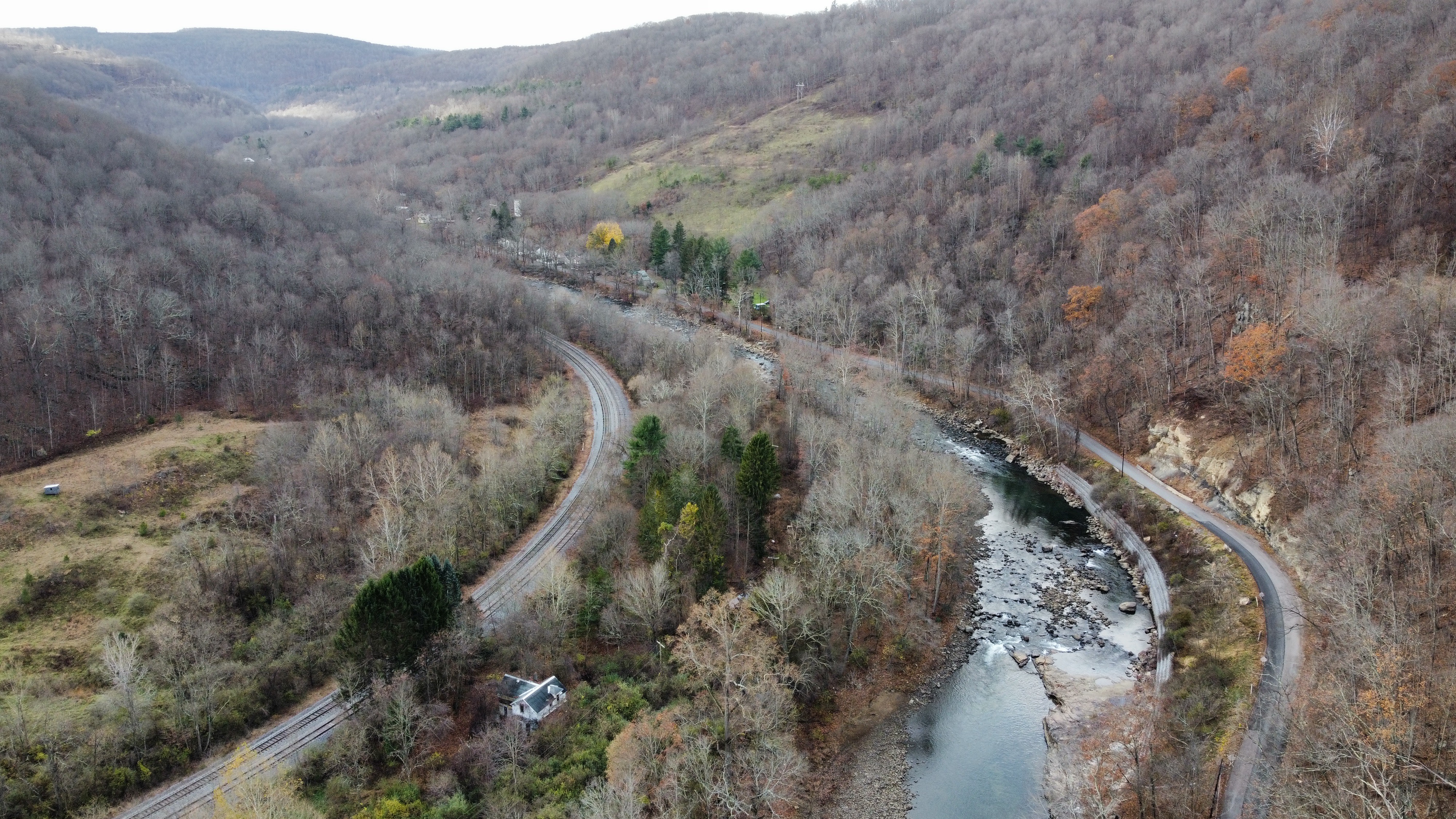A Floodplain Management Permit is required for all development in any designated Floodplain area, as depicted on maps issued by FEMA. Garrett County also offers interactive web maps with a Floodplain layer. Development is broadly defined to include any man-made change to land including grading, filling, clearing, dredging, extraction, storage, subdivision of land, and construction and improvement of structures and buildings. For any development to take place, all necessary permits must be obtained, which may include federal and State permits, as well as local permits.
For construction in wetlands and floodplains, a State permit from the Wetlands and Waterways Program, Water Management Administration at Maryland Department of the Environment (MDE) is required.
Floodplain Compliance
To be properly permitted, proposed development may not increase flooding or create a dangerous situation during flooding; especially on another persons property. If a structure is involved it must be constructed to minimize damage during flooding. In order to document that a structure is compliant with Document Garrett County Floodplain Management Ordinance (3 MB) requirements and to properly rate it for flood insurance purposes, structures that are required to be elevated must have an Document Elevation Certificate (1.49 MB) on file. This form must be completed by a surveyor and attest to certain elevation and venting requirements. To be compliant, an elevated building must be elevated to the Flood Protection Elevation (100-year Flood Elevation plus additional freeboard specified by the community) and have proper water equalizing venting. All electrical and mechanical equipment, including ductwork and HVAC equipment, must also be elevated. Fuel tanks must be elevated or anchored as specified in the brochure Document Flooding and Fuel Tanks (96.56 KB) . The final grade of the interior of the crawl space must be at or above final finished grade on the exterior on at least one side. Certain buildings accessory to the primary structure (sheds, garages, pavilions, etc.) may not have to be elevated, provided that they do not exceed a certain size and meet certain provisions including being anchored, constructed of flood resistant materials, having all mechanical and electrical equipment elevated, and having the proper water equalizing vents. These requirements should be verified with the Permits and Inspection Services Office when getting a permit for activity in a mapped 100-year floodplain.
The Permits and Inspection Services Office shall grant permits only after determining that the proposed development will be in complete conformance with the requirements of the Document Garrett County Floodplain Management Ordinance (3 MB) and all other applicable local codes and ordinances. All other necessary permits or approvals must be applied for or granted. A permit issued by the Permits and Inspection Services Office is not valid until all necessary permits for development are obtained. Receipt of federal or State permits does not exempt development from the provisions of the Floodplain Ordinance.
Prior to issuance of a permit, the Permits and Inspection Services Office shall determine the location of the project relative to floodways and floodplains, and shall note on the permit the proper elevation to which Document the lowest floor (18.99 KB) of proposed structures must be elevated. In approximate floodplains where an elevation is not available the applicant shall be required to obtain such elevation. The applicant must agree to secure all other required permits, an Document Elevation Certificate (28.31 KB) , Flood Proofing Certificate, engineering analysis, or other required verifications deemed appropriate by the Permits and Inspection Services Office.
After issuance of a permit, no changes of any kind shall be made to the application, permit, or any of the plans, specifications, or other documents submitted with the application without the written approval of the Permits and Inspection Services Office.
A copy of the permit or other verification must be displayed at the construction site during construction activity.
Work on the permitted activity shall begin within one (1) year of the issuance of the permit, or the permit shall expire, unless the Permits and Inspection Services Office grants a written extension. Work shall be completed within two (2) years of the date of the permit unless a greater time is specified in the permit or a written extension is granted.
During construction, the Permits and Inspection Services Office or an authorized representative shall inspect the site to determine that the work is in compliance with the permit. Any work found to be in noncompliance must be corrected before any additional work is undertaken.
Record of Permits
A record of all floodplain permits shall be maintained and be available upon request for the Federal Emergency Management Agency or its authorized agent (Water Resources Administration) during periodic assessments of this community’s participation in the National Flood Insurance Program. All documents needed to support any permit action, such as elevation certificates, map amendments or revisions, variance actions, shall be available for review during these assessments.
Contact
Call 301-334-1923 for questions regarding floodplain management.




